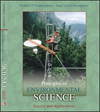 |  Principles of Environmental Science William P. Cunningham,
University of Minnesota
Mary Ann Cunningham,
Vassar College
Air: Climate and Pollution
Learning ObjectivesAfter studying this chapter, you should be able to
I.summarize the structure and composition of the atmosphere. |
 |  |  | II.explain how jet streams, seasonal winds, and global climate patterns determine local weather. |
 |  |  | III.understand El Niño cycles and the causes of natural climate change. |
 |  |  | IV.debate the hypothesis that human actions are altering the global climate. |
 |  |  | V.describe the major categories and sources of air pollution. |
 |  |  | VI.evaluate the dangers of stratospheric ozone depletion. |
 |  |  | VII.understand how air pollution damages human health, vegetation, and building materials. |
 |  |  | VIII.judge how air quality around the world has improved or degraded, and suggest what we might do about problem areas. |
|



 2002 McGraw-Hill Higher Education
2002 McGraw-Hill Higher Education